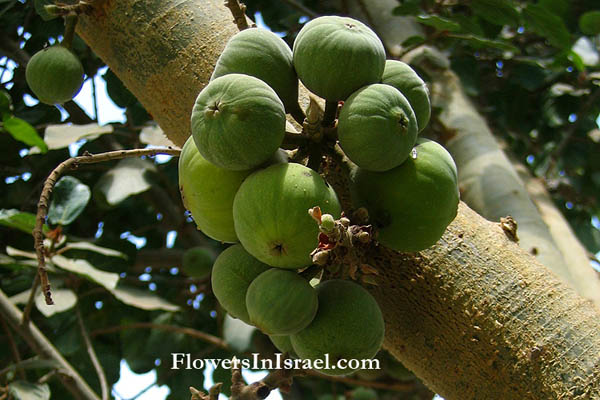The sycamore tree mentioned in today’s reading from the Book of Amos is not exactly the kind we see growing on the street so named in Mill
Valley. The scientific name of Amos’s
tree is Ficus sycomorus, and in the
Middle East it’s also known as a fig-mulberry.
Its leaves are thick and leathery, and may have been the ones the writer
of Genesis had in mind for the ersatz clothing invented in the Garden of Eden. Interestingly, unlike our local sycamores,
Amos’s trees bear edible fruit! In the
first century, Pliny the Elder wrote about them in his Natural History:
Its leaves resemble those of the mulberry in size and appearance. The fig
produces its fruit not on branches but on the trunk itself, and the Egyptian
variety is exceptionally sweet and seedless. The tree's yield is extremely
prolific, but only when iron hooks are used to make incisions in the fruit, which
otherwise does not ripen. When this is
done the fruit is picked three days later, while another fig forms beneath it;
the tree thus has seven crops of very juicy figs in a single summer.
So when Amos tells the cult prophet Amaziah that he is a dresser of sycamores, he’s describing
himself as one of the guys who went around piercing the fruit of the
fig-mulberry, one by one, to induce the proper ripening. This was his paid work, not prophesying. I guess this means he was responsible for
making life sweeter – an interesting counterpoint to his message to the
Northern kingdom, which can’t have been easy to swallow at all.


Cool.
ReplyDeleteVery
Delete